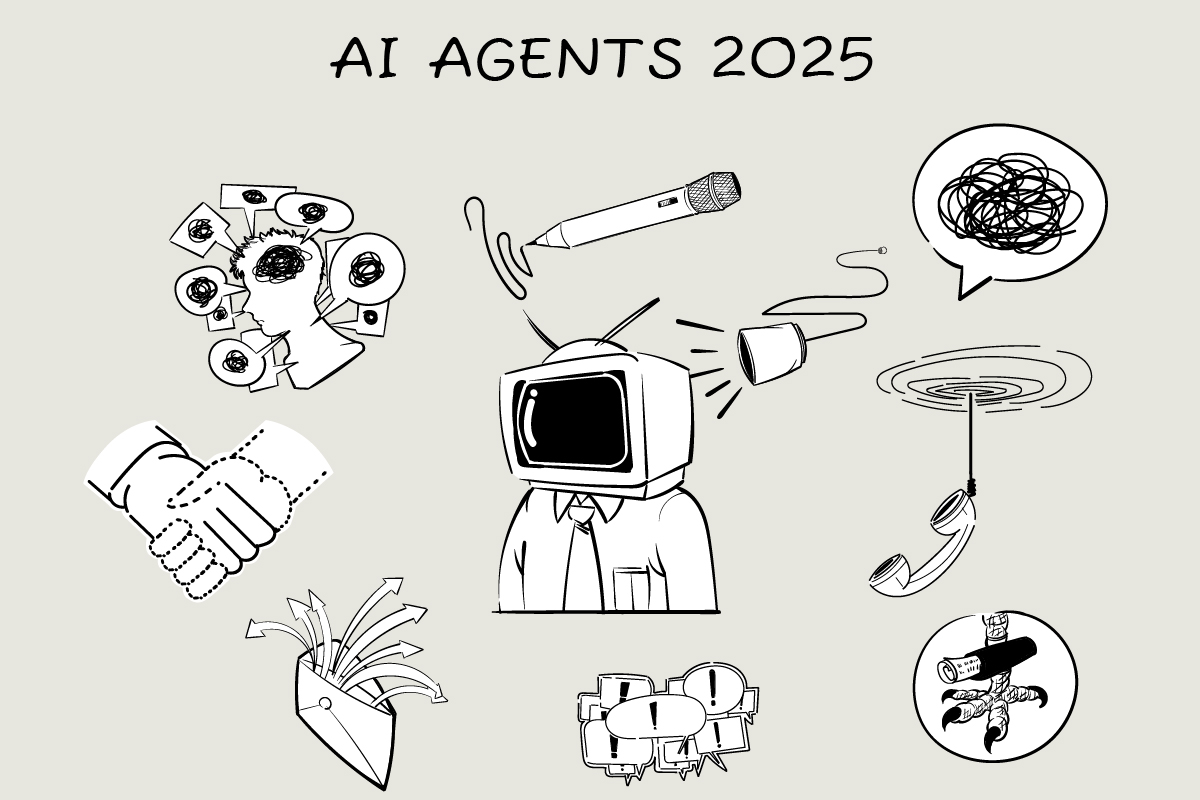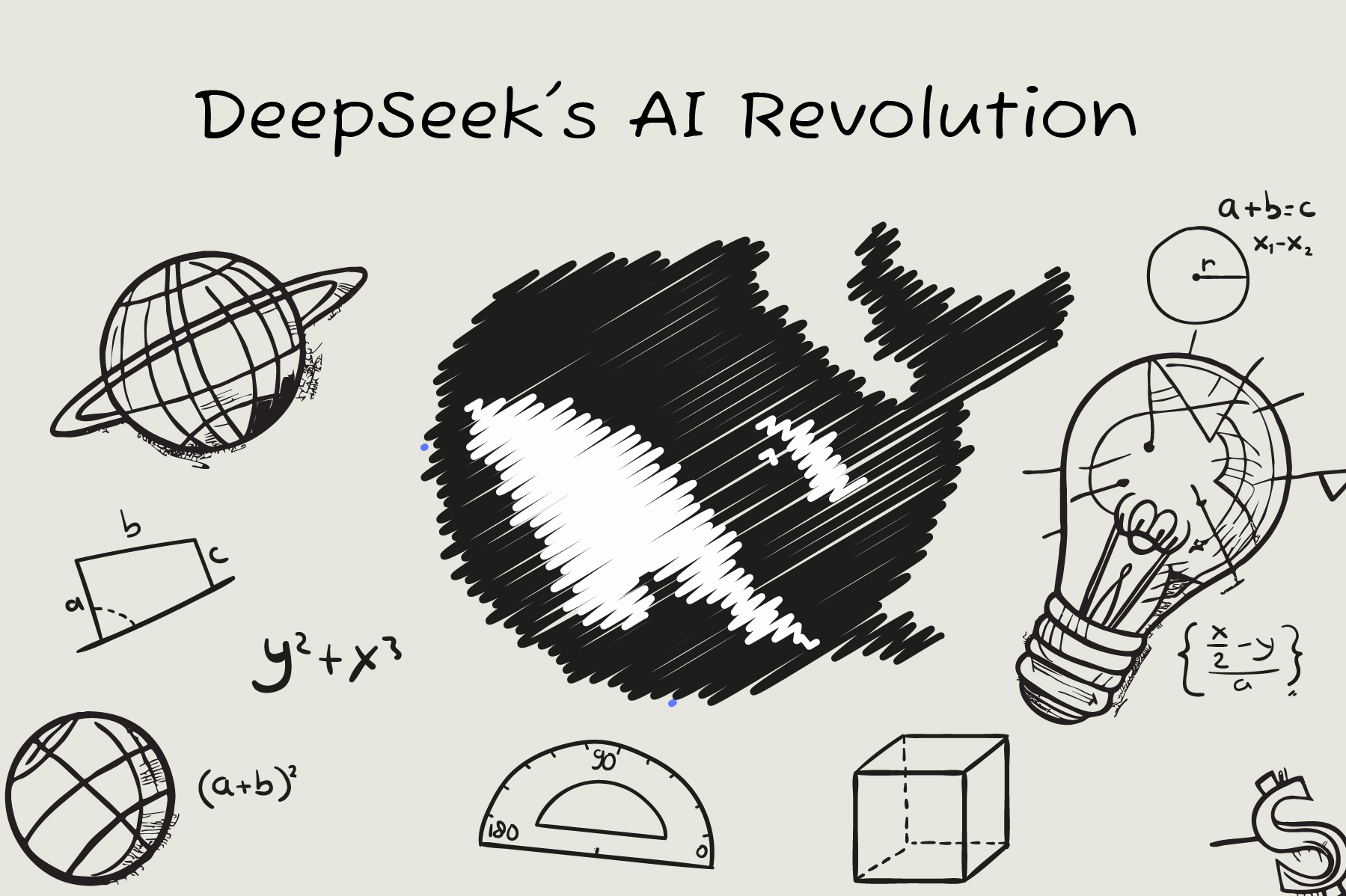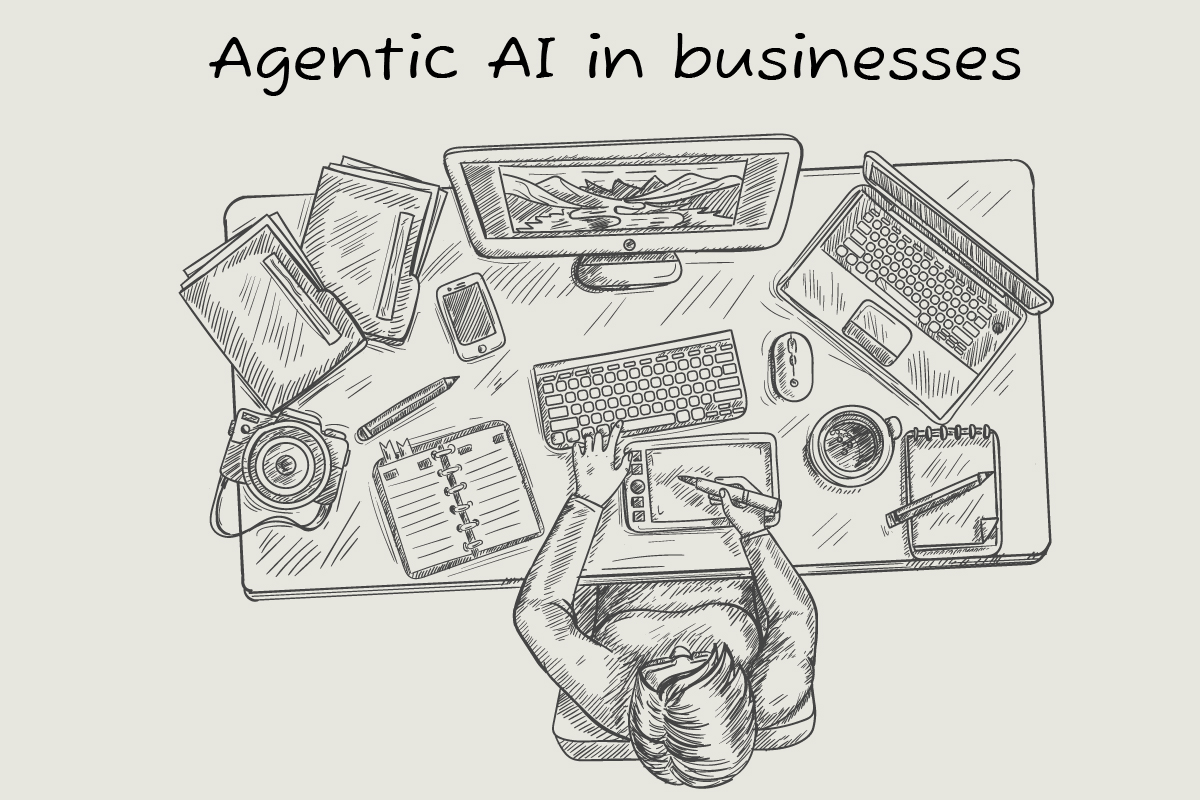Table of Contents:
- The Evolution from AI Assistants to Autonomous Agents
- Core Components of Modern AI Agents
- The Business Adoption Timeline: From Experimentation to Integration
- Breaking Technical Barriers in Agentic AI
- Human-AI Collaboration: The Workforce Transformation
- Implementing AI Agents: The Autonomy Spectrum
- Beyond Efficiency: Strategic Business Impact
- Market Performance and Investment Trends
- Implementation Roadmap for 2025
- FAQs About Agentic AI
The Evolution from AI Assistants to Autonomous Agents
The distinction between an AI assistant and an AI agent might seem subtle at first glance, but it represents a profound shift in how we relate to artificial intelligence. Where assistants respond to our commands—drafting emails when asked or analyzing data when prompted—agents proactively pursue goals, making decisions and taking actions to achieve desired outcomes.
"Think of the difference between having a secretary and having a colleague," explains Dr. Vivek Mishra, senior member at IEEE. "Your secretary executes your instructions. A colleague understands your objectives and independently determines how to help achieve them. That's the transition we're witnessing in AI—from tools that respond to our prompts to partners that understand our goals."1
This transition hasn't happened overnight. The foundations were laid through developments in reinforcement learning, multi-agent systems, and large language models that gradually expanded AI's decision-making capabilities. But 2025 marks the inflection point where these technologies coalesce into systems ready for mainstream deployment.
According to Boston Consulting Group's global survey, 67% of organizations are now "considering autonomous agents as part of their AI transformation." Meanwhile, KPMG's latest pulse survey found that while 51% of organizations are exploring AI agents, only 12% have deployed them—a gap that suggests we're standing at the beginning of a massive deployment wave.1
Core Components of Modern AI Agents
To understand what makes today's AI agents different from their predecessors, we need to look beneath the surface at their architecture. Modern agentic AI systems combine several critical capabilities that enable their autonomy:
- Chain-of-thought reasoning - The ability to break complex tasks into logical steps and reason through them sequentially
- Persistent memory - Allows agents to maintain context over extended periods and learn from past interactions
- Tool utilization - The capacity to interface with external systems, from databases to communication platforms to specialized software
- Goal orientation - The ability to understand high-level objectives and independently determine how to achieve them
Microsoft's developments illustrate this evolution. Their rapid innovation cycle introduced over 700 updates and 150 new features to Copilot in 2024 alone, building toward increasingly autonomous capabilities.2 What began as smart text completion has evolved into systems that can independently execute complex workflows across multiple platforms.
Janet Mertens, Managing Director of Data, Insight and Analytics at AMS, provides a concrete example of these capabilities in action: "The Generative AI use case I love is constant engagement. With hiring global teams across different time zones, we can't always be on when the candidates have questions. But now, with Generative AI, agents, chatbots and large language models, we can actually feed all of that information into an assistant for the candidate to have on-demand, 24/7 engagement."3
This recruitment scenario exemplifies how agents transcend the limitations of traditional AI systems by operating continuously and adapting to user needs without constant supervision.
The Business Adoption Timeline: From Experimentation to Integration
The trajectory of AI adoption follows a familiar pattern:
- 2023: The year of experimentation, when businesses first explored generative AI's possibilities
- 2024: The year of adoption, when these technologies began finding their place in everyday workflows
- 2025: The year of integration—when AI becomes fundamentally embedded in how organizations operate3
This progression is reflected in spending patterns. According to BCG's research, GenAI budgets will grow 60% from 2025 to 2027, expanding from an average 4.7% of total IT budgets to approximately 7.6%.1 KPMG's data is even more striking, finding that 68% of respondents plan to invest between $50 million and $250 million in GenAI over the next year—up from 45% just a year ago.1
These aren't speculative investments anymore. Organizations are expecting returns. The days of experimenting with AI for learning purposes alone have ended, with 75% of C-level executives listing AI/GenAI among their top three strategic priorities for 2025.1 Microsoft reports that organizations are already achieving a return of $3.70 for every $1 invested in AI technologies.2
For Marco Tempest, a "techno-illusionist" who integrates emerging technologies into his performances, the shift to agentic AI has transformed his creative process. "Two years ago, I was using AI to generate ideas or visuals on demand," he told me during a recent interview. "Now, I have an agent that watches my rehearsals through computer vision, suggests choreography improvements, reworks music timing, and even negotiates with venues about technical requirements—all while I focus on the human elements of performance."
While Tempest's case might seem specialized, it illustrates how AI agents are taking over process-oriented tasks across sectors—from creative industries to manufacturing to professional services.
Breaking Technical Barriers in Agentic AI
What makes 2025 the tipping point for agentic AI? Several technical barriers that previously limited AI autonomy are rapidly dissolving:
-
Enhanced contextual understanding: AI models have become dramatically more capable at understanding context and maintaining coherence over extended interactions. "In 2023, we'd see hallucinations or logical breakdowns if an AI needed to maintain context beyond a few exchanges," explains Dr. Sagar Samtani, associate professor at Indiana University's Kelley School of Business. "Today's models can maintain logical consistency across hundreds of steps in a complex process."1
-
Improved alignment through RLHF: Advancements in reinforcement learning from human feedback (RLHF) have made it possible to align AI behavior with human expectations much more effectively. This reduces the supervision required for AI to stay on task and make appropriate decisions.
-
Retrieval-augmented generation: These techniques have dramatically improved AI's ability to access and utilize specific information from vast knowledge bases without hallucinating facts—a critical requirement for autonomous systems making consequential decisions.
-
Domain-specific AI models: The development of specialized AI models for particular domains has accelerated. "What's happened, and what we'll see more [organizations] do in 2025, is more vertical applications of training models," notes Samtani.1 These specialized models perform significantly better than general-purpose systems in their domains of expertise, making them reliable enough for autonomous operation.
Human-AI Collaboration: The Workforce Transformation
Despite the technological advances, the most significant barriers to agentic AI adoption may be human rather than technical. The LinkedIn Work Change Report highlights that by 2030, 70% of the skills used in most jobs will change due to AI acceleration.3 This creates both opportunity and anxiety as workers wonder how their roles will evolve.
"We are entering one of the largest change management exercises in history," the World Economic Forum report notes, "and every business leader and professional will need to embrace it in order to unlock the value of AI."3
Organizations are responding to this challenge by prioritizing learning and development, with 37% of C-suite executives globally saying they intend to invest in training employees on AI tools this year.3 But training alone isn't sufficient; the psychological adjustment to working alongside autonomous systems requires deeper cultural changes.
Vlad Lukic, global leader of BCG's tech and digital advantage practice, emphasizes that while autonomous agents will be a significant focus for many organizations this year, their success depends on thoughtful implementation that considers the human dimension.1
"The organizations succeeding with agentic AI aren't just deploying technology—they're redesigning workflows and roles to create meaningful human-AI collaboration," explains Dr. Lara Hammond, an organizational psychologist specializing in workplace technology adoption. "When people feel they're being enhanced rather than replaced, adoption rates skyrocket."
Implementing AI Agents: The Autonomy Spectrum
Not all AI agents will operate with the same degree of independence. In practice, organizations are deploying a spectrum of autonomous capabilities tailored to specific contexts and risk profiles:
- Semi-autonomous agents: Handle routine tasks but escalate decisions to humans when facing uncertainty or high-stakes choices
- Supervised autonomous agents: Operate independently within well-defined parameters but provide transparency into their decision-making and allow human overrides
- Fully autonomous agents: Authorized to execute complete workflows with minimal human involvement
Kalin Dimtchev, Country Manager for the Adriatic at Microsoft, highlights this range of possibilities: "A critical conversation will be about drawing boundaries for agents' autonomy and maintaining human oversight, ensuring these advancements are responsible, inclusive, and impactful."2
Most organizations are starting with semi-autonomous implementations in low-risk contexts. A legal department might deploy agents to review standard contracts independently but require human approval for novel clauses or high-value agreements. A marketing team might let agents optimize campaign parameters autonomously but maintain human oversight of creative content.
This cautious approach reflects both the nascent state of the technology and legitimate concerns about accountability and control. As one executive at a Fortune 500 financial services firm told me on condition of anonymity, "We're excited about autonomous agents, but we're implementing a 'trust but verify' model where everything they do is logged, explained, and subject to human review—at least for now."
Beyond Efficiency: Strategic Business Impact
The narrative around AI has often focused narrowly on productivity gains—doing the same things faster or with fewer resources. But agentic AI promises something more profound: the ability to reconceptualize how work gets done.
"If 2023 was about experimenting with AI, and 2024 was about adopting AI, 2025 will be the year when companies prepare for a level of functional change in how we work with AI that is likely to feel disruptive," notes the World Economic Forum.3
This disruption extends beyond efficiency to fundamentally alter what humans and machines each contribute to the workplace. As AI agents take over routine cognitive tasks—from writing reports to analyzing data to managing projects—human workers are being pushed toward areas where machines still struggle: creative problem-solving, ethical judgment, interpersonal communication, and strategic thinking.
"The augmentation of human work rather than its replacement will be the dominant theme of 2025," predicts Forbes contributor Bernard Marr. "In 2025, I predict that there will be more thoughtful consideration of how humans can work hand-in-hand with AI to augment our technical abilities while freeing up our time to apply our creative and interpersonal skills to jobs that machines still can't manage."4
This shift mirrors earlier technological revolutions. When calculators became ubiquitous, they didn't eliminate the need for mathematicians—they changed what mathematicians focused on, freeing them from computation to concentrate on concept development and proof construction. Similarly, agentic AI won't eliminate knowledge workers but will transform what they do with their time and cognitive resources.
Market Performance and Investment Trends
The financial implications of this shift are already apparent in market behavior. According to recent research published in May 2024, "Firms with a higher level of adoption of AI exhibit higher stock returns. A one-standard deviation increase in the AI adoption level indicates an 18 basis-point increase in expected monthly stock returns."5
This "AI premium" reflects investors' growing recognition that effective AI implementation—particularly autonomous systems that can operate independently—represents a significant competitive advantage. The research suggests this premium is "related to the slow realization of early AI investments and digital benefits" and is "influenced by shifting investor perceptions of AI technology."5
These market movements reinforce the sense that we're witnessing not just another technology trend but a fundamental restructuring of how value is created and captured in the digital economy. Organizations that successfully deploy autonomous agents may gain lasting advantages in efficiency, responsiveness, and innovation capacity that translate directly to financial performance.
Implementation Roadmap for 2025
As we navigate the emergence of agentic AI in 2025, several principles will guide successful implementation:
-
Thoughtful integration over replacement: Organizations that view AI agents as partners rather than substitutes for human workers will likely see better outcomes in both technology adoption and workforce morale.
-
Transparency and control mechanisms: Explainable AI techniques that make agent decision-making comprehensible to humans will become increasingly important as these systems take on greater responsibility.
-
Continuous learning ecosystems: Both for AI agents and the humans working alongside them will define successful organizations. The 37% of executives investing in AI training for their employees are laying groundwork for this collaborative future.3
-
Ethical governance frameworks: Questions about accountability, bias, and appropriate boundaries for AI authority will require ongoing attention from technologists, business leaders, and policymakers alike.
The rise of agentic AI represents not just a technological shift but a reimagining of the relationship between humans and machines. As Elena Karras reflected at the end of our conversation: "What's fascinating isn't just what the AI can do—it's how it's changing what my team does. We're asking different questions now, thinking at a higher level. The machines haven't replaced us; they've elevated us."
In 2025, that elevation—of human capability, creativity, and purpose alongside increasingly autonomous AI—will be the most important story in technology.
FAQs About Agentic AI
What is the difference between AI assistants and AI agents?
AI assistants respond to specific commands and prompts, while AI agents proactively pursue goals, making independent decisions and taking actions without constant human direction.
How much are companies investing in agentic AI?
According to KPMG, 68% of organizations plan to invest between $50 million and $250 million in generative AI technologies in 2025, with autonomous agents being a key focus area.
What ROI can companies expect from AI agent implementation?
Microsoft reports that organizations are achieving a return of $3.70 for every $1 invested in AI technologies, with autonomous agents potentially offering even higher returns.
Will AI agents replace human workers?
Rather than replacement, the trend is toward augmentation. AI agents will handle routine cognitive tasks, allowing humans to focus on creative problem-solving, ethical judgment, interpersonal communication, and strategic thinking.
What industries will be most impacted by agentic AI?
While all sectors will see impacts, professional services, customer support, financial services, healthcare, and creative industries are experiencing the earliest and most significant transformations.
How can businesses prepare for agentic AI adoption?
Businesses should invest in employee training, develop clear governance frameworks, start with low-risk implementations, focus on human-AI collaboration models, and establish metrics to measure impact.
What technical capabilities make modern AI agents possible?
Key capabilities include chain-of-thought reasoning, persistent memory, tool utilization (connecting to external systems), and goal orientation (understanding objectives and determining paths to achieve them).
Footnotes
-
https://www.techtarget.com/searchenterpriseai/feature/The-future-of-generative-AI-Trends-to-follow ↩ ↩2 ↩3 ↩4 ↩5 ↩6 ↩7 ↩8
-
https://news.microsoft.com/en-cee/2025/01/08/6-ai-trends-youll-see-more-of-in-2025/ ↩ ↩2 ↩3
-
https://www.weforum.org/stories/2025/01/ai-2025-workplace/ ↩ ↩2 ↩3 ↩4 ↩5 ↩6 ↩7
-
https://www.forbes.com/sites/bernardmarr/2024/09/24/the-10-biggest-ai-trends-of-2025-everyone-must-be-ready-for-today/ ↩
-
https://papers.ssrn.com/sol3/papers.cfm?abstract_id=4850201 ↩ ↩2



